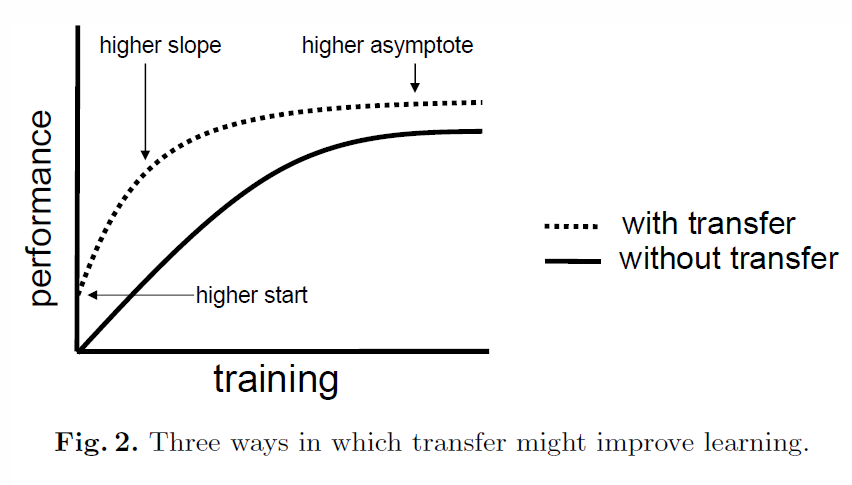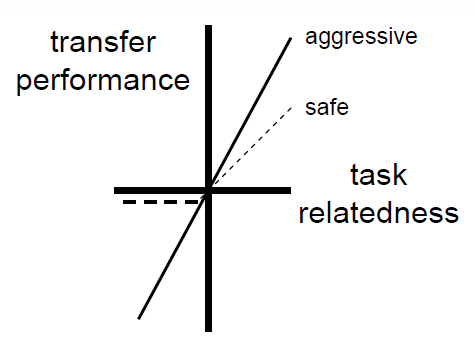Lisa Torrey, Jude Shavlik (2009) - «Transfer Learning».pdf (176.3 KB)
Some citations
Transfer methods tend to be highly dependent on the machine learning algorithms being used to learn the tasks, and can often simply be considered extensions of those algorithms.
The goal of transfer learning is to improve learning in the target task by leveraging knowledge from the source task.
There are three common measures by which transfer might improve learning.
- First is the initial performance achievable in the target task using only the transferred knowledge, before any further learning is done, compared to the initial performance of an ignorant agent.
- Second is the amount of time it takes to fully learn the target task given the transferred
knowledge compared to the amount of time to learn it from scratch.- Third is the final performance level achievable in the target task compared to the final level without transfer.
Avoiding negative transfer
If the source task is not sufficiently related or if the relationship is not well leveraged by the transfer method, the performance with many approaches may not only fail to improve – it may actually decrease.
Ideally, a transfer method would produce positive transfer between appropriately related tasks while avoiding negative transfer when the tasks are not a good match.
In practice, these goals are difficult to achieve simultaneously.
Approaches that have safeguards to avoid negative transfer often produce a smaller effect from positive transfer due to their caution.
Conversely, approaches that transfer aggressively and produce large positive-transfer effects often have no protection against negative transfer.
Rejecting bad information
One way of approaching negative transfer is to attempt to recognize and reject harmful source-task knowledge while learning the target task.
The goal in this approach is to minimize the impact of bad information, so that the transfer performance is at least no worse than learning the target task without transfer.
At the extreme end, an agent might disregard the transferred knowledge completely,
but some methods also allow it to selectively reject parts and keep other parts.

